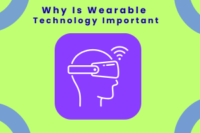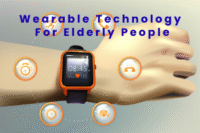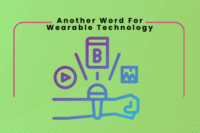The Top 10 Wearable Technology Companies Leading the Industry
Published: 01 Jan 2025
The wearable technology industry is growing rapidly, offering innovative solutions for health, fitness, and everyday convenience. Knowing the top 10 wearable technology companies helps users identify leaders in the market and understand their groundbreaking products. These companies set trends, drive innovation, and influence the future of wearable devices. If you love technology or want to buy wearables, this information helps you choose wisely. You can also check the statistics about wearable technology products that shipped in 2024.
Top 10 Wearable Technology Companies
Here are top 10 wearable technology companies in the technology market:
- Apple
- Fitbit
- Microsoft
- Xiaomi Corporation
- Samsung
- Huawei
- Sony
- Garmin
- HTC
- Augmedix

Here is a detail description of the top 10 largest wearable technology companies one by one:
Apple
Apple is one of the top companies that make wearable technology, known for its popular Apple Watch that offers both fitness tracking and smart features.
Overview:
Apple Inc., founded in 1976 by Steve Jobs, Steve Wozniak, and Ronald Wayne, is a leading technology company known for its innovative consumer electronics, software, and online services. Headquartered in Cupertino, California, Apple has significantly influenced the tech industry with products like the iPhone, iPad, and Mac computers. In recent years, Apple has expanded into the wearable technology market, becoming a dominant player with its Apple Watch and AirPods.
Key Wearable Products
Here is a top wearable products made by Apple given bellow:
- Apple Watch Series 10: Released in 2024, the Apple Watch Series 10 features the new S10 SiP chip, additional sensors, and enhanced health monitoring capabilities. It offers advanced fitness tracking, heart rate monitoring, and integration with various health apps, making it a comprehensive health companion.
- Apple Watch Ultra 2: Designed for sports and adventure enthusiasts, the Apple Watch Ultra 2 boasts a larger screen, dual-precision GPS, and extended battery life. It is built to withstand extreme conditions, making it suitable for activities like running, hiking, biking, and diving.
- AirPods: Apple’s wireless earbuds, AirPods, have evolved to include features like active noise cancellation, spatial audio, and seamless integration with Apple devices. They provide a high-quality audio experience for music, calls, and voice assistants.
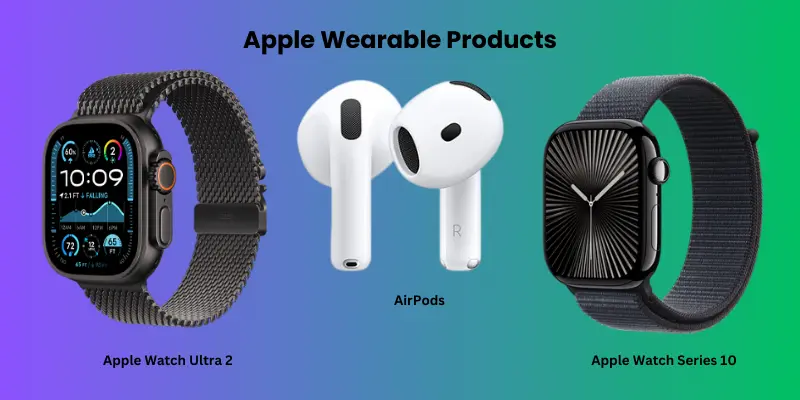
Technological Advancements
Apple’s wearable devices incorporate cutting-edge technologies such as advanced sensors for health monitoring, custom-designed chips for efficient performance, and seamless integration with the Apple ecosystem. The development of the S10 SiP chip in the Apple Watch Series 10 enhances processing capabilities, enabling more sophisticated health and fitness tracking features.
Target Audience
Apple makes wearables for many people. Fitness lovers, health-focused users, and tech fans all use them. Professionals like the easy connection features. The Apple Watch Ultra 2 is great for athletes. It works well for adventures and tough activities.
Global Presence and Market Share
As of the first quarter of 2024, Apple leads the global wearables market with a 17.4% market share as the best wearable brand, shipping approximately 7.7 million units. Despite a slight decline from the previous year, Apple maintains its dominance in the industry.
Sustainability and Future Goals
Apple is committed to environmental responsibility, focusing on using recycled materials, reducing carbon emissions, and ensuring energy-efficient manufacturing processes. The company aims to achieve carbon neutrality across its entire business by 2030. Future goals include expanding its wearable product line, exploring new form factors like smart glasses and fitness rings, and integrating advanced health monitoring features.
Impact on the Wearable Technology Industry
Apple’s entry into the wearable technology market has set industry standards for design, functionality, and user experience. The Apple Watch and AirPods have popularized wearable devices, driving consumer adoption and influencing competitors to enhance their offerings. Apple’s focus on health and fitness features has also spurred innovation in health monitoring technologies within the industry.
Fitbit
Fitbit is one of the top wearable tech companies, known for its innovative fitness trackers and smartwatches that help users lead healthier lives.
Overview:
Fitbit, founded in 2007, is a pioneering company in the wearable technology market. Initially known for its fitness trackers, Fitbit has since expanded into smartwatches and health-focused wearables. The company focuses on making fitness and health tracking accessible and easy to use, helping individuals improve their well-being. In 2021, Fitbit was acquired by Google, which has further strengthened its position in the market by integrating its products with Google’s advanced technologies.
Key Wearable Products
- Fitbit Charge 5: A fitness tracker with built-in GPS, heart rate monitoring, sleep tracking, and an ECG app. It’s designed for users seeking a high-performance, affordable tracker.
- Fitbit Versa 4: A smartwatch that blends fitness tracking with smartwatch capabilities. It features sleep tracking, stress management tools, and fitness apps, along with notifications and Google Assistant integration.
- Fitbit Sense 2: A health-centric smartwatch that offers advanced features like ECG monitoring, skin temperature sensing, and stress tracking. It’s designed for users focused on overall wellness.
Technological Advancements
- PurePulse Heart Rate Monitoring: Fitbit’s proprietary heart rate tracking technology, offering continuous data for better insight into fitness and recovery.
- Active Zone Minutes: A feature that tracks time spent in specific heart rate zones, helping users reach personalized fitness goals.
- ECG App: Introduced in the Fitbit Sense, it allows users to monitor their heart health and detect signs of atrial fibrillation.
Target Audience
Fitbit’s products cater to a wide range of users:
- Fitness enthusiasts: People who want to track their daily activity, workouts, and health metrics.
- Health-conscious individuals: Those interested in monitoring vital signs like heart rate, sleep quality, and stress levels.
- General users: Individuals seeking a simple and affordable smartwatch to stay connected and manage health.
Global Presence and Market Share
Fitbit is a top wearable company and a major player in the wearable technology market, particularly in North America and Europe. It has also made inroads in Asia and Latin America, with a focus on making wearables accessible to a wide range of consumers. Despite competition from companies like Apple and Garmin, Fitbit maintains a strong market share, especially in the fitness tracker category.
Sustainability and Future Goals
Fitbit is committed to sustainable practices, using recyclable packaging and making efforts to reduce carbon emissions. The company also prioritizes energy-efficient manufacturing processes. Looking ahead, Fitbit plans to enhance its product range with a focus on chronic disease management and deeper integration of health features, continuing to innovate in the areas of sleep and mental health tracking.
Impact on the Wearable Technology Industry
Fitbit’s innovations have played a key role in popularizing fitness trackers and smartwatches. The company’s focus on health metrics like heart rate, sleep, and stress has set trends in the industry, influencing competitors like Garmin, Apple, and Xiaomi. Fitbit has also contributed to the broader adoption of wearables, making health data more accessible and integrated into daily life.
Microsoft
Microsoft is a key player in the tech world, contributing to the top 10 wearables with its innovative devices designed for productivity and health tracking.
Overview:
Microsoft, founded in 1975, is a global technology leader known for software, cloud services, and hardware. Its wearable technology, such as the HoloLens 2, targets enterprise users and integrates with Microsoft’s vast software ecosystem, especially in AR and healthcare.
Key Wearable Products
- HoloLens 2: An AR headset for enterprise applications, offering immersive experiences with improved sensors and eye-tracking.
- Microsoft Band (Discontinued): A fitness tracker with heart rate monitoring, discontinued in 2016.
- Azure IoT: A cloud platform that integrates wearables for real-time data analysis in sectors like healthcare.
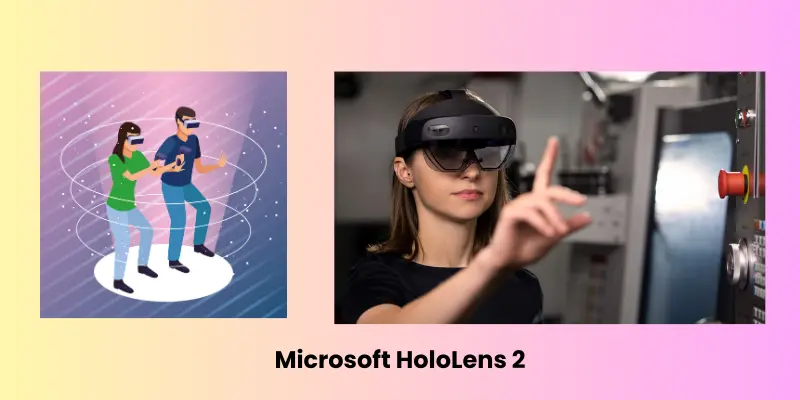
Technological Advancements
- AR Technology: The HoloLens 2 leads in augmented reality, offering hands-on, interactive experiences for businesses.
- Azure Integration: Microsoft uses its Azure platform to enhance data analytics for wearable devices, especially in healthcare.
- AI in Healthcare: Wearables integrated with AI help manage chronic diseases and predict health trends.
Target Audience
- Enterprise Users: Industries like healthcare and manufacturing use HoloLens 2 for training and remote work.
- Healthcare Professionals: Microsoft’s cloud solutions integrate with wearables for patient monitoring and health data analysis.
- Tech-Savvy Businesses: Companies using wearables for operational improvements and data tracking.
Global Presence and Market Share
- Regions: Microsoft dominates in North America and Europe, especially in industries using AR.
- Position: Microsoft leads in the enterprise AR segment, but doesn’t compete directly with consumer wearables like Apple.
Sustainability and Future Goals
- Sustainability: Microsoft aims to be carbon-negative by 2030, using sustainable materials in its devices.
- Future Plans: The company is enhancing HoloLens for broader AR applications, focusing on healthcare and education.
Impact on the Wearable Technology Industry
- Market Growth: HoloLens 2 has advanced the use of AR in professional settings, influencing the wearable market.
- Industry Influence: Microsoft’s cloud and AR innovations set trends for other companies to explore enterprise-focused wearable tech.
Xiaomi Corporation
Xiaomi Corporation is recognized as one of the best wearable technology companies, offering affordable and innovative devices that appeal to a global audience.
Overview:
Founded in 2010, Xiaomi has rapidly grown into one of the world’s largest electronics companies. Known for its affordable yet high-quality smartphones, Xiaomi has expanded into wearables, home automation, and IoT products. The company aims to provide innovative technology at competitive prices, and its wearables have gained global popularity.
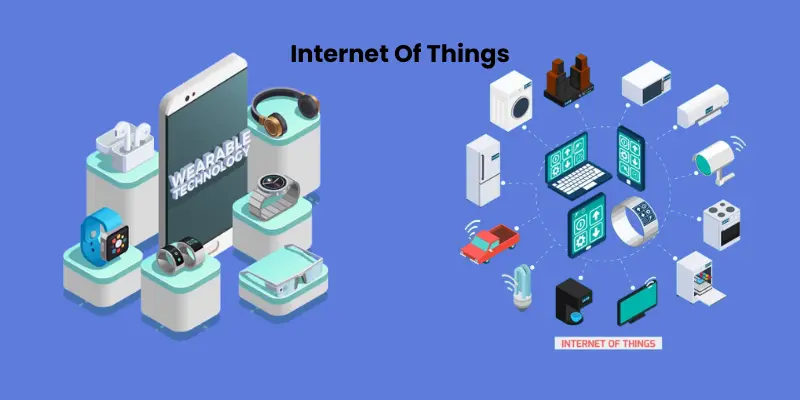
Key Wearable Products
- Xiaomi Mi Band 7: A budget-friendly fitness tracker that monitors heart rate, sleep, and physical activity. Known for its long battery life and affordable pricing.
- Xiaomi Watch S1: A more advanced smartwatch with a premium design, fitness tracking, and health monitoring features.
- Amazfit GTR 3: A collaboration with subsidiary Amazfit, this smartwatch features a sleek design, health tracking, and a large AMOLED display.
Technological Advancements
- Battery Life: Xiaomi focuses on extending battery life in its wearables, with the Mi Band series lasting up to 20 days on a single charge.
- Health Monitoring: The company integrates advanced sensors for continuous heart rate, sleep, and stress monitoring, especially in its smartwatches.
- AI Integration: Xiaomi’s wearables use AI for personalized fitness recommendations and health insights.
Target Audience
- Fitness Enthusiasts: Xiaomi’s wearables are ideal for users who want budget-friendly fitness tracking features.
- Tech-Savvy Consumers: Xiaomi targets consumers seeking high-quality wearables at affordable prices.
- General Users: Offering wearables with both fitness and smart functionalities, Xiaomi appeals to a broad audience looking for versatile devices.
Global Presence and Market Share
- Regions: Xiaomi is dominant in markets like India, China, and Southeast Asia. It also has a growing presence in Europe and Latin America.
- Market Share: As of 2023, Xiaomi holds a significant portion of the global wearable market, particularly in the budget segment, competing with brands like Fitbit and Huawei.
Sustainability and Future Goals
- Sustainability: Xiaomi is focusing on energy-efficient manufacturing and recycling initiatives. It has introduced eco-friendly packaging for its products.
- Future Plans: The company aims to continue expanding its IoT ecosystem, integrating wearables with smart home products, and improving health-tech features in future devices.
Impact on the Wearable Technology Industry
- Market Growth: Xiaomi’s affordability has made wearables accessible to a broader audience, especially in emerging markets.
- Industry Influence: By offering competitive pricing and quality, Xiaomi has pushed other companies to innovate in the budget-friendly segment, influencing the market’s pricing dynamics.
Samsung
Samsung is one of the biggest wearable tech companies, known for its cutting-edge smartwatches and fitness trackers that blend style with advanced features.
Overview:
Samsung, founded in 1938, is a global leader in electronics, renowned for its smartphones, TVs, and consumer electronics. The company has been a major player in the wearable tech industry with its Galaxy Watch series, which integrates health tracking, fitness features, and connectivity. Samsung continues to innovate in wearables, competing with giants like Apple and Xiaomi.
Key Wearable Products
- Galaxy Watch 6: A premium smartwatch offering advanced fitness tracking, heart rate monitoring, ECG, and blood oxygen measurement, with enhanced sleep tracking features.
- Galaxy Fit 2: A budget-friendly fitness tracker offering basic health metrics like heart rate and step counting, with a long battery life.
- Galaxy Buds Pro: Wireless earbuds with high-quality sound, noise cancellation, and health features such as tracking your heart rate during workouts.
Technological Advancements
- Health Monitoring: Samsung’s wearables include ECG, blood pressure, and blood oxygen sensors, setting them apart in health-focused features.
- Battery Efficiency: Galaxy Watch 6 offers extended battery life with features like Power Saving Mode and longer usage between charges.
- Integration with Samsung Ecosystem: Samsung wearables are deeply integrated with Samsung Health and its broader ecosystem of smartphones and smart home devices, offering a seamless experience.
Target Audience
- Fitness Enthusiasts: The Galaxy Watch 6 and Galaxy Fit 2 appeal to users who want reliable health and fitness tracking features.
- Tech-Savvy Consumers: Samsung’s innovative features in its wearables attract users seeking cutting-edge technology.
- General Users: Samsung’s wearables cater to users seeking a balance of functionality, style, and health features for daily use.
Global Presence and Market Share
- Regions: Samsung is a market leader in South Korea and has a strong presence in North America, Europe, and parts of Asia.
- Market Share: As of 2023, Samsung is one of the top wearable tech companies, often ranking second or third globally, competing directly with Apple and Xiaomi.
Sustainability and Future Goals
- Sustainability: Samsung is committed to reducing its carbon footprint, using eco-friendly materials in its products, and ensuring energy-efficient production processes.
- Future Goals: The company plans to expand its wearables’ health capabilities, with a focus on more advanced sensors and deeper integration with health services.
Impact on the Wearable Technology Industry
- Market Growth: Samsung’s advancements in health-focused features, such as ECG and blood pressure monitoring, have set new standards in the wearable industry.
- Industry Influence: Samsung has influenced the design and functionality of other wearable devices, pushing competitors to improve battery life, health features, and integration with broader ecosystems.
Huawei
Huawei is a leader among global wearable companies, offering innovative smartwatches and fitness devices with advanced health tracking and long-lasting performance.
Overview:
Founded in 1987, Huawei is a global technology giant primarily known for its telecommunications equipment and smartphones. The company has expanded into the wearable tech market with products like the Huawei Watch GT series, blending fitness features with high-tech design. Huawei is committed to innovation, focusing on integrating AI and health monitoring into its wearables.
Key Wearable Products
- Huawei Watch GT 3: A flagship smartwatch offering fitness tracking, sleep monitoring, heart rate analysis, and a long battery life (up to 14 days).
- Huawei Band 7: A slim fitness tracker with all-day heart rate monitoring, sleep tracking, and a bright AMOLED display, offering great value for money.
- Huawei FreeBuds Pro 2: Premium wireless earbuds with noise cancellation, sound optimization, and fitness tracking features.
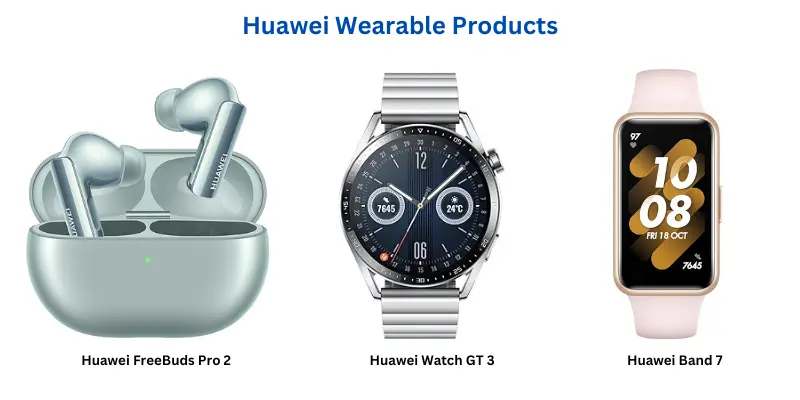
Technological Advancements
- Battery Life: Huawei wearables, especially the Watch GT 3, stand out for their long-lasting battery, with up to two weeks of usage.
- AI Integration: Huawei’s wearables use AI for personalized health and fitness insights, including smart workout suggestions and sleep improvement recommendations.
- Health Monitoring: Advanced sensors for heart rate monitoring, SpO2 measurement, and sleep tracking are key features, enhancing overall user experience.
Target Audience
- Fitness Enthusiasts: Huawei’s Watch GT 3 and Band 7 cater to users seeking comprehensive fitness tracking features at competitive prices.
- Tech-Savvy Consumers: Users looking for wearables with AI-powered insights and seamless integration with Huawei smartphones and devices.
- Health-Conscious Users: With in-depth health monitoring features, Huawei targets those interested in tracking their physical wellness.
Global Presence and Market Share
- Regions: Huawei has a strong presence in China and parts of Europe, with expanding reach in Africa and Asia. However, its presence in North America is limited due to regulatory challenges.
- Market Share: As of 2023, Huawei holds a significant share of the wearable market, particularly in China and Europe, competing with other tech giants like Samsung and Xiaomi.
Sustainability and Future Goals
- Sustainability: Huawei is focused on reducing its environmental impact by using eco-friendly materials and improving energy efficiency in its manufacturing processes.
- Future Goals: Huawei aims to enhance its wearable technology by integrating more advanced health monitoring features, including ECG and blood pressure sensors, while expanding its ecosystem for smarter device integration.
Impact on the Wearable Technology Industry
- Market Growth: Huawei’s emphasis on long battery life and health features has raised the bar for other companies, influencing wearable technology trends.
- Industry Influence: Huawei’s innovation in integrating AI and advanced sensors has pushed competitors to enhance health-related features in their wearables.
Sony
Sony is one of the top wearable brands in the world, known for its smart and stylish devices.
Overview:
Sony, founded in 1946, is a global leader in electronics, entertainment, and gaming. Known for its high-quality audio-visual products, Sony has expanded into wearable technology with products like Sony SmartWear and Sony LinkBuds. The company integrates cutting-edge sound and connectivity features into its wearables, targeting users looking for premium audio experiences.
Key Wearable Products
- Sony LinkBuds S: True wireless earbuds designed for a lightweight, comfortable fit, with excellent sound quality and noise-canceling features.
- Sony SmartBand 2: A fitness tracker offering heart rate monitoring, sleep tracking, and activity logging, with a slim, discreet design.
- Sony WF-1000XM5: Premium wireless earbuds featuring industry-leading noise cancellation, great sound, and long battery life.
Technological Advancements
- Noise-Canceling Technology: Sony’s wearables, particularly the WF-1000XM5, are known for their top-tier noise-canceling features, providing clear, immersive sound.
- Audio Quality: Sony’s focus on high-definition audio delivers superior sound experiences, especially in its earbuds and wearables.
- Integration with Sony Ecosystem: Sony’s wearables work seamlessly with other Sony products, such as Xperia smartphones and PlayStation consoles, providing an integrated tech experience.
Target Audience
- Music Lovers: Sony targets individuals who value high-quality sound and noise cancellation in their wearables.
- Health and Fitness Fans: The SmartBand 2 appeals to users who want basic fitness tracking without compromising comfort or style.
- Technology Lovers: Sony’s wearables cater to users looking for seamless integration with their existing Sony products.
Global Presence and Market Share
- Regions: Sony has a strong presence in North America, Japan, and Europe, with expanding reach in Asia.
- Market Share: As of 2023, Sony is a key player in the premium audio and wearable market, competing with brands like Apple, Bose, and Samsung.
Sustainability and Future Goals
- Sustainability: Sony is committed to sustainability, focusing on reducing its environmental footprint by using recyclable materials and energy-efficient manufacturing processes.
- Future Goals: Sony plans to continue innovating in the audio and wearables market, with a focus on improving sound quality and expanding health features.
Impact on the Wearable Technology Industry
- Market Growth: Sony has influenced the wearable market by prioritizing superior audio experiences and noise-canceling technology, raising the bar for audio-centric wearables.
- Industry Influence: Sony’s innovation in noise-canceling and sound quality has forced competitors to improve their audio features, shaping industry trends.
Garmin
Garmin is a leading brand in wearable technology, known for its advanced fitness trackers and GPS-enabled smartwatches.
Overview:
Founded in 1989, Garmin is a leader in GPS technology and wearable devices. Known for its fitness and outdoor-oriented wearables, Garmin provides products designed to meet the needs of athletes, adventurers, and health-conscious consumers. The company’s wearables focus on high-performance GPS tracking, health monitoring, and durability.
Key Wearable Products
- Forerunner 955: A high-performance smartwatch designed for runners and athletes, featuring advanced GPS tracking, heart rate monitoring, and customizable fitness metrics.
- Fenix 7: A rugged outdoor smartwatch with a solar-powered option, providing multi-sport tracking, navigation features, and health monitoring.
- Vivoactive 4: A fitness smartwatch that tracks heart rate, stress, sleep, and offers built-in GPS for outdoor activities.
Technological Advancements
- Advanced GPS Features: Garmin’s wearables excel in GPS accuracy, offering precise location tracking for outdoor activities like hiking, running, and cycling.
- Solar Charging: The Fenix 7 includes solar charging technology, extending battery life during outdoor activities.
- Health Monitoring: Garmin wearables offer advanced health tracking features, including heart rate monitoring, Pulse Ox, stress tracking, and sleep analysis.
Target Audience
- Athletes: Garmin’s products are specifically designed for runners, cyclists, swimmers, and other athletes who need accurate performance data and tracking.
- Outdoor Enthusiasts: Wearables like the Fenix 7 cater to hikers, adventurers, and explorers looking for durable, GPS-equipped devices.
- Health-Conscious Users: Garmin’s fitness watches appeal to users seeking comprehensive health and wellness tracking with a focus on heart health, sleep, and stress.
Global Presence and Market Share
- Regions: Garmin has a significant presence in North America, Europe, and Asia, especially popular in countries like the U.S. and Germany.
- Market Share: As of 2023, Garmin is a major player in the fitness and outdoor wearable market, competing with companies like Apple, Fitbit, and Suunto.
Sustainability and Future Goals
- Sustainability: Garmin is committed to sustainable practices, using eco-friendly materials in its products and packaging and focusing on energy-efficient production.
- Future Goals: Garmin aims to expand its health features with more advanced sensors and better integration with smart home technologies while continuing to innovate in outdoor wearables.
Impact on the Wearable Technology Industry
- Market Growth: Garmin’s focus on outdoor and fitness tracking has influenced the development of wearables in these niche markets, offering more specialized products.
- Industry Influence: Garmin has set high standards for GPS accuracy and durability in wearables, pushing competitors to develop more rugged, performance-focused devices.
HTC (High Tech Computer Corporation)
HTC is a leading name among wearable companies, known for its innovative virtual reality and smart device solutions.
Overview:
Founded in 1997, HTC is a global technology company known for its smartphones and VR (virtual reality) products. Although HTC initially focused on mobile phones, it later ventured into wearables and virtual reality. Its wearables, such as the HTC Vive series, focus on providing immersive experiences and innovative health tracking through VR integration.
Key Wearable Products
- HTC Vive Flow: A lightweight, portable VR headset designed for mindfulness, relaxation, and immersive experiences, connecting easily to smartphones for a seamless user experience.
- HTC Wildfire Fitness Band: A fitness tracker offering basic health monitoring features like heart rate tracking and sleep analysis, with an emphasis on simplicity.
- HTC Vive Pro 2: A high-end VR headset that offers virtual reality capabilities, widely used in health, wellness, and gaming environments.
Technological Advancements
- Virtual Reality Integration: HTC’s wearables, especially the Vive Flow, focus on virtual reality (VR) for wellness and entertainment, allowing users to meditate, exercise, and explore immersive experiences.
- Health Tracking: While more known for VR, HTC’s fitness wearables like the Wildfire Band also feature heart rate and sleep monitoring, offering users real-time health data.
- Wireless Connectivity: HTC’s products prioritize seamless wireless integration with smartphones, enhancing the user experience across devices.
Target Audience
- Tech Enthusiasts: HTC targets users who are interested in cutting-edge technology, particularly VR and health integration.
- Fitness and Wellness Consumers: Wearables like the Wildfire Band appeal to those seeking simple yet effective fitness tracking without the need for advanced features.
- Virtual Reality Users: The Vive Flow targets users looking to explore VR for meditation, relaxation, and interactive experiences.
Global Presence and Market Share
- Regions: HTC has a strong presence in Asia, particularly in Taiwan, as well as in Europe and North America for its VR and smartphone products.
- Market Share: As of 2023, HTC holds a smaller share of the wearable market compared to competitors like Apple and Fitbit, but it continues to be a leader in the VR space, influencing the wearable technology and gaming industries.
Sustainability and Future Goals
- Sustainability: HTC is committed to reducing its environmental footprint by focusing on energy-efficient products and utilizing sustainable materials in its devices.
- Future Goals: HTC plans to continue innovating in the VR sector and wearable fitness market, with a focus on further improving virtual reality integration for health and wellness.
Impact on the Wearable Technology Industry
- Market Growth: HTC’s focus on virtual reality in wearables has introduced new opportunities for immersive fitness experiences, influencing the VR and fitness tech sectors.
- Industry Influence: By leading in VR technology, HTC has inspired other companies to explore how virtual reality can enhance wellness and fitness tracking.
Augmedix
Augmedix is a leading healthcare technology company that leverages wearable devices and AI-powered solutions to transform medical documentation and enhance patient care.
Overview:
Founded in 2012, Augmedix specializes in providing real-time remote medical documentation services using wearable technology. The company uses Google Glass and other wearables to assist healthcare professionals by transcribing doctor-patient interactions, improving efficiency, and reducing administrative burdens. Augmedix integrates artificial intelligence with wearable devices to streamline healthcare workflows.
Key Wearable Products
- Augmedix Google Glass: A wearable device that assists healthcare professionals by capturing real-time data during patient visits and transcribing medical notes, allowing doctors to focus more on patient care.
- Augmedix Smart Glasses: A customized version of Google Glass used specifically for healthcare applications, enabling remote documentation, data retrieval, and patient interaction assistance.
Technological Advancements
- AI Integration: Augmedix combines AI with wearable technology, enabling accurate voice-to-text transcription, improving healthcare documentation processes, and reducing manual input errors.
- Remote Documentation: The wearable devices provide real-time access to remote scribes, helping healthcare providers reduce administrative overhead and ensure accurate documentation.
- Speech Recognition: Augmedix employs speech-to-text technology to streamline note-taking and reduce errors in medical records.
Target Audience
- Healthcare Providers: Augmedix’s wearable solutions cater primarily to doctors, nurses, and healthcare professionals looking to streamline medical documentation.
- Hospitals and Clinics: The company’s products are designed for use in hospitals, clinics, and medical practices that require accurate and efficient documentation of patient visits.
Global Presence and Market Share
- Regions: Augmedix is growing primarily in the U.S., working with healthcare providers across the country, particularly in large hospital systems.
- Market Share: As of 2023, Augmedix is a significant player in the healthcare wearables sector, though it faces competition from other medical technology providers. Its niche focus on documentation gives it a specialized market presence.
Sustainability and Future Goals
- Sustainability: Augmedix aims to reduce paper waste and improve healthcare efficiency by digitizing medical records and reducing the time spent on manual documentation.
- Future Goals: The company plans to expand its product offerings and continue innovating in AI and wearable technology to enhance healthcare workflows and improve patient care.
Impact on the Wearable Technology Industry
- Market Growth: Augmedix has influenced the wearable market by integrating wearable tech into healthcare documentation, an area that has seen significant growth as healthcare providers seek solutions to reduce administrative workloads.
- Industry Influence: By focusing on improving the efficiency of healthcare professionals, Augmedix has set a precedent for the use of wearables in healthcare, encouraging other companies to explore similar applications.
| Which Company is the Best? |
|---|
|
One of the best wearable technology companies is Apple. The Apple Watch stands out because it looks great and works really well. It helps you stay healthy by tracking your heart rate and daily activities. You can also use it to stay connected with your phone and other Apple devices. It’s easy to use, stylish, and perfect for keeping up with your health and daily life! |
FAQ
In India, popular wearable tech companies are boAt, GOQii, and Ultrahuman. They make smartwatches, fitness trackers, and health monitors. Xiaomi and SenseGiz also offer affordable and useful devices.
These companies are driving the wearable technology market in India with innovative and accessible products.
In the UK, wearable tech companies include Fitbit and Garmin, which offer fitness trackers and smartwatches. MyZone is known for heart rate monitors, and BioBeats focuses on stress management wearables. These brands help with health, fitness, and well-being.
Some major wearable technology companies in the USA include Apple, Fitbit (owned by Google), and Garmin. These companies create popular devices like smartwatches, fitness trackers, and GPS wearables. They focus on innovation and health-tracking features that are loved worldwide.
Wearables in Pakistan offer affordable options from brands like TCL and Realme. These devices are mainly used for health tracking, notifications, and daily convenience.
Here’s the list of the top 10 wearable technology companies in the world:
- Apple
- Fitbit
- Microsoft
- Xiaomi Corporation
- Samsung
- Huawei
- Sony
- Garmin
- HTC
- Augmedix
Conclusion
The top 10 wearable technology companies offer a wide range of products to make life easier, healthier, and more fun. From smartwatches and fitness trackers to VR headsets and smart glasses, these devices help with health tracking, fitness, work, and entertainment. Companies like Apple, Fitbit, Samsung, and Garmin focus on health and fitness, while others like HTC and Microsoft explore virtual reality and smart tools. Each brand brings something unique, showing how wearable tech is useful for everyone. With the top 10 wearable technology companies constantly innovating, the future of wearables looks more exciting than ever.

- Be Respectful
- Stay Relevant
- Stay Positive
- True Feedback
- Encourage Discussion
- Avoid Spamming
- No Fake News
- Don't Copy-Paste
- No Personal Attacks

- Be Respectful
- Stay Relevant
- Stay Positive
- True Feedback
- Encourage Discussion
- Avoid Spamming
- No Fake News
- Don't Copy-Paste
- No Personal Attacks
